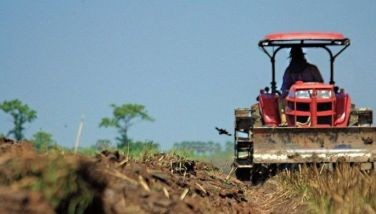New technology reviving RP shrimp industry
June 1, 2003 | 12:00am
Gradually but consistently, a new technology is paving the way for the revival of the country’s moribund shrimp industry.
Called Environment-Friendly Schemes in Shrimp Farming, the technology was developed through the Mangrove-Friendly Shrimp Culture (MFSC) project, a collaborative undertaking of the Association of Southeast Asian Nations (ASEAN), Southeast Asian Fisheries Development Center (SEAFDEC), ad the Japanese Trust Fund.
The technology is now being disseminated in the country through the Joint Mission for Accelerated Nationwide Technology Transfer program (JMANTTP), a collaborative effort of the Philippine government-hosted, Tigbauan, Iloilo-based SEAFDEC Aquaculture Department (AQD) and the DA-Bureau of Fisheries and Aquaculture Resources (BFAR).
In a letter to AQD chief Dr. Rolando R. Platon, the technology’s latest beneficiary, Albertito Siochi Nasugbo, Batangas, said: "I am very certain now that your environment-friendly schemes in shrimp farming is the answer to the revitalization and sustainability of the shrimp industry."
Over the past decade, the country’s shrimp industry was in a slump owing to the dread luminous bacteria.
The new technology has demonstrated that luminous bacteria can be controlled effectively, resulting in high survival rate, fast growth, and high-quality shrimp required by the export market.
Siochi reported to Dr. Platon that the second production run in his shrimp farm had also been successful. The shrimp fry that came from SEAFDEC AQD hatchery and stocked in his one-hectare farm of 15 pieces per square meter yielded 4.86 tons in just 127 days of culture. The run grossed P1.5 million.
AQD had earlier operated Siochi"s ponds for shrimp culture in 2001 to test the new technology. Stocked with 25 pieces/sq m, the run harvested 5.85 tons after 116 days of culture. – Rudy A. Fernandez
Called Environment-Friendly Schemes in Shrimp Farming, the technology was developed through the Mangrove-Friendly Shrimp Culture (MFSC) project, a collaborative undertaking of the Association of Southeast Asian Nations (ASEAN), Southeast Asian Fisheries Development Center (SEAFDEC), ad the Japanese Trust Fund.
The technology is now being disseminated in the country through the Joint Mission for Accelerated Nationwide Technology Transfer program (JMANTTP), a collaborative effort of the Philippine government-hosted, Tigbauan, Iloilo-based SEAFDEC Aquaculture Department (AQD) and the DA-Bureau of Fisheries and Aquaculture Resources (BFAR).
In a letter to AQD chief Dr. Rolando R. Platon, the technology’s latest beneficiary, Albertito Siochi Nasugbo, Batangas, said: "I am very certain now that your environment-friendly schemes in shrimp farming is the answer to the revitalization and sustainability of the shrimp industry."
Over the past decade, the country’s shrimp industry was in a slump owing to the dread luminous bacteria.
The new technology has demonstrated that luminous bacteria can be controlled effectively, resulting in high survival rate, fast growth, and high-quality shrimp required by the export market.
Siochi reported to Dr. Platon that the second production run in his shrimp farm had also been successful. The shrimp fry that came from SEAFDEC AQD hatchery and stocked in his one-hectare farm of 15 pieces per square meter yielded 4.86 tons in just 127 days of culture. The run grossed P1.5 million.
AQD had earlier operated Siochi"s ponds for shrimp culture in 2001 to test the new technology. Stocked with 25 pieces/sq m, the run harvested 5.85 tons after 116 days of culture. – Rudy A. Fernandez
BrandSpace Articles
<
>
- Latest
Latest
Latest
March 4, 2024 - 3:32pm
By Ian Laqui | March 4, 2024 - 3:32pm
March 4, 2024 - 2:12pm
By Kristine Daguno-Bersamina | March 4, 2024 - 2:12pm
February 17, 2024 - 2:31pm
February 17, 2024 - 2:31pm
February 13, 2024 - 7:24pm
By Gaea Katreena Cabico | February 13, 2024 - 7:24pm
February 13, 2024 - 7:17pm
By Ian Laqui | February 13, 2024 - 7:17pm
Recommended






























